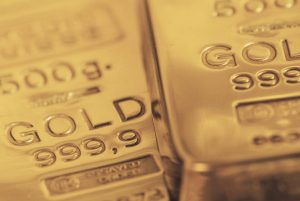The Case for Gold Is Not about Price
The comments below are an edited and abridged synopsis of an article by Kelsey Williams
Gold’s price is not an indication of its value. The value of gold is constant and does not change. Its price is a reflection of the value of the US dollar. Nothing more, nothing less, nothing else.
 The dollar is constantly deteriorating, punctuated with periods of relative stability. This corresponds with highs and lows for the gold price, both in nominal and real terms.
The dollar is constantly deteriorating, punctuated with periods of relative stability. This corresponds with highs and lows for the gold price, both in nominal and real terms.
So what can we expect from the US dollar, and how does that translate to expectations for the price of gold?
The dollar could continue to strengthen, and the price of gold would move lower (similar to what happened between 1980 and 2001, and what we have experienced since 2011).
Or the dollar could renew its long-term decline, eventually ending in complete rejection. In that case, owning gold is imperative for wealth preservation and financial survival. At a time like that, the dollar price of gold becomes meaningless; what matters is how much gold you own.
Attempts by the Fed to return to normal interest rates could backfire. There could be another (worse) credit collapse, and the unwinding of asset prices denominated in dollars would trigger a depression and lead reduced economic activity. The dollar would increase in value, and gold would decline. The dollar would buy more, not less. But the supply of dollars would be less. This is true deflation.
There are variations and combinations of the above scenarios that may play out. Any actions or responses by government and the Fed will affect the magnitude and duration of various crises.
Whatever the course of events, or how they unfold, the case for gold is not about price. It is about value. And its value will become apparent when governments and individuals are scrambling amid the ruins of the financial system looking for something, anything, to replace worthless paper currencies, which are nothing more than substitutes for real money.
